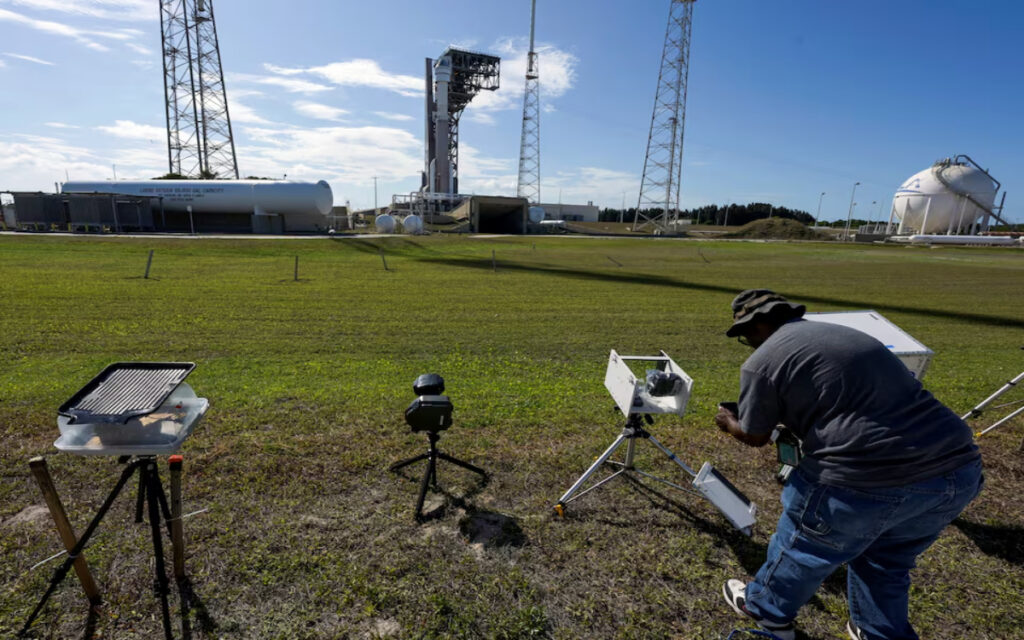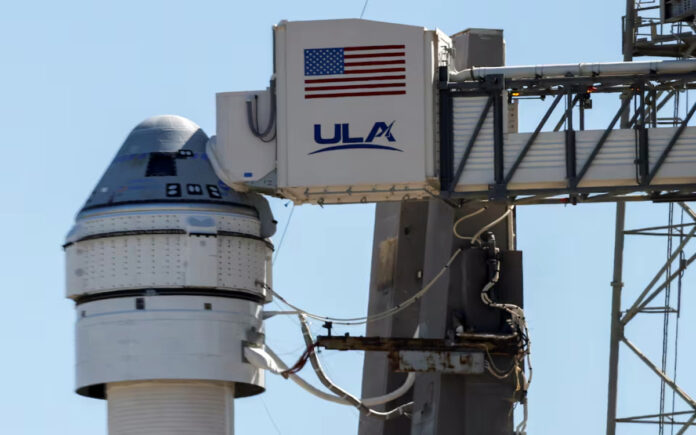Cape Canaveral: Boeing Co’s cutting-edge Starliner astronaut capsule is on the brink of a monumental milestone: its inaugural crewed test flight to the International Space Station (ISS). After two years since its maiden voyage without humans to the orbital laboratory, the gumdrop-shaped CST-100 Starliner, housing two astronauts, is primed for liftoff.
Scheduled for 10:34 p.m. (0234 GMT on Tuesday), the launch from NASA’s Kennedy Space Center in Florida will see the Starliner propelled by an Atlas V rocket, courtesy of the Boeing-Lockheed Martin joint venture United Launch Alliance (ULA).
Veteran NASA astronauts Barry “Butch” Wilmore, 61, and Sunita “Sunni” Williams, 58, will helm the Starliner, bringing their combined 500 days of space experience to the mission. Wilmore takes the reins as commander, while Williams assumes the pilot seat.
Though designed for autonomous flight, the crew stands ready to manually operate the spacecraft if required. The test flight mandates Wilmore and Williams to practice manual maneuvering, underscoring the importance of human intervention capability.

Also Read | iOS 17.5 Update: Release Date, New Features, and More
With favorable weather conditions predicted (a 95% likelihood), ULA’s launch readiness review on Friday cleared the path for countdown initiation at Cape Canaveral. Notably, this launch marks the first crewed Atlas rocket voyage since the 1960s Mercury program, which saw icons like John Glenn orbiting Earth.
Should all proceed as planned, the Starliner will rendezvous with the ISS approximately 26 hours post-launch, docking with the research outpost orbiting 250 miles (400 km) above Earth early on Wednesday.
Following a week-long stay at the space station, Wilmore and Williams will make history with their return trip, landing the Starliner in the U.S. Desert Southwest using parachutes and airbags—an unprecedented feat for crewed NASA missions.
Also Read | Taiwan Jolted by Magnitude 5.6 Earthquake
The success of this mission is pivotal for Starliner’s integration into NASA’s commercial crew program, offering a domestic alternative for transporting astronauts to low-Earth orbit, complementing SpaceX’s efforts since 2020.
Boeing’s journey to this moment has been arduous, marked by development setbacks and substantial cost overruns. Nevertheless, the successful uncrewed Starliner mission in 2022 paved the way for Monday night’s voyage, bolstering confidence in Boeing’s capabilities.
Looking ahead, Starliner is slated for at least six more crewed missions to the space station, solidifying its role in NASA’s space exploration endeavors.
In a pre-flight briefing, Boeing vice president Mark Nappi expressed unwavering confidence in Starliner’s readiness, echoed by NASA chief Bill Nelson, emphasizing the meticulous preparations for this test flight.



